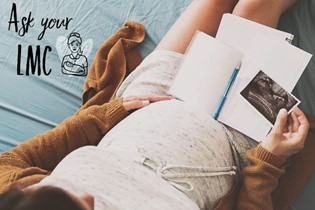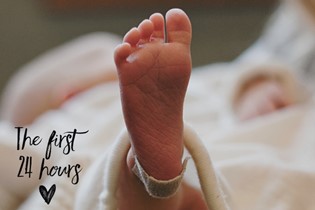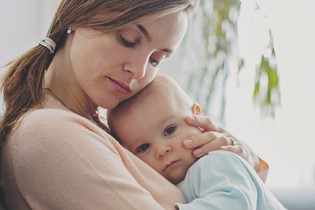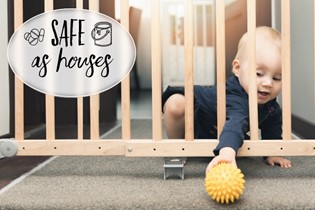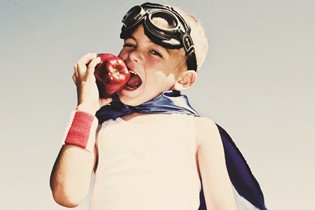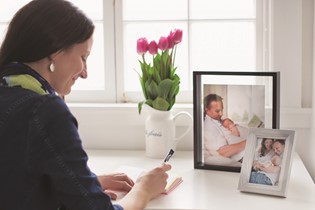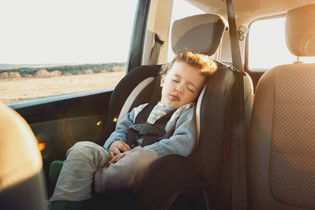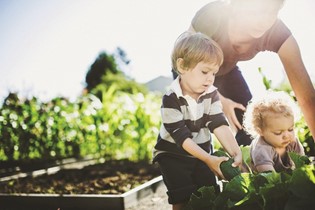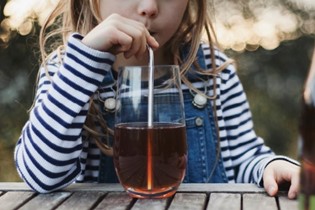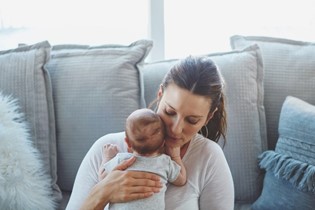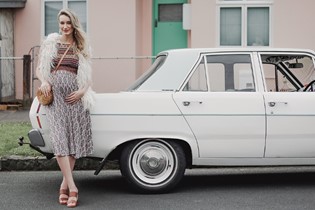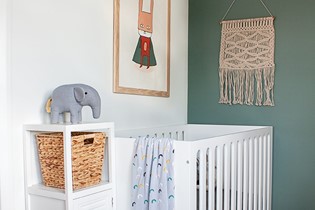How to make travelling with a toddler work
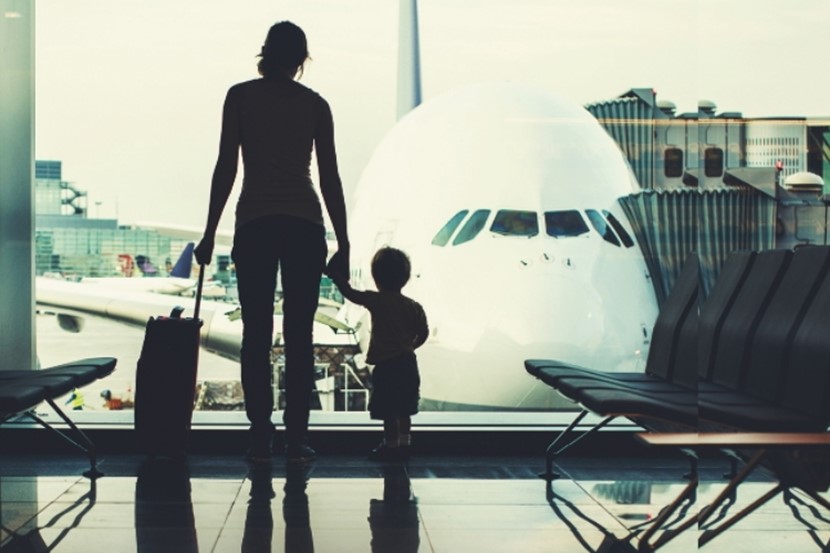
Alice Parminter and family discover Ireland, and that travel with a toddler has its benefits, to be sure.
Like many Kiwis, I’ve travelled before. But no adventure has ever been quite like this – our first trip as a family. I knew it wouldn’t be easy, parenting in a foreign clime, but I didn’t expect to learn so much. And I definitely didn’t expect the lessons to come from my toddler.
Earlier this year, my husband Chris, was contracted for a three-month stint in Ireland. His is a sought-after industry, and the Emerald Isle welcomed him with open arms. Naturally, I decided to tag along for an extended holiday with our 13-month-old son Lucas. After all, when would I have the chance to travel again? Soon enough we’ll be tied to a house in suburban New Zealand, settled in one place as the serious business of our child’s education begins.
Ireland was a treasure trove of tourist attractions and historical sites, many of them child-friendly and all of them fascinating. Even with a toddler in tow, I still felt like a proper traveller, seeing the sights and absorbing history. I just happened to be the tourist who knew the location of the nearest baby-change facility.
We arrived in Dublin in March. Despite freezing temperatures, we took advantage of the excellent light rail system to explore the city over the next week before turning our sights southwards to Cork. From our new home in (very) rural Crossbarry, we then thoroughly explored much of the southern end of Ireland. As the weather got warmer, we visited forests, national parks and castles, wandering through weathered ruins and ancient graveyards. Summer hit in the final weeks of our stay and we lazed on beautiful white-sand beaches and explored farms and wildlife parks. We embraced our new community, attending the agricultural shows and family fun days.
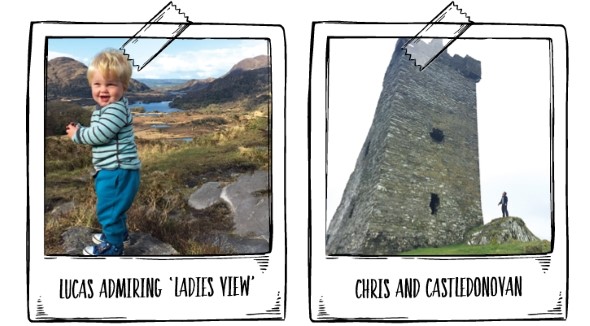
But of course we had to change the way we approached things. Where previous holidays might have involved cramming in as much as possible – staying out till all hours before rising early to race to the next attraction – travelling with a toddler meant we needed to slow down. Most of our outings were in the afternoon. Lucas and I quckly established a quiet morning routine, recharging our batteries while Chris worked, before setting out to explore as a family.
We had a car, so we were able to travel at our own pace, usually leaving the house during nap time or after lunch. Luckily, the car has always been one of Lucas’s favourite places to nap, which made extended trips much easier. As our time in Ireland progressed, Lucas napped less, and he became more interested in looking out the window. Even these car trips were entertaining. By the end of the three months, he was pointing out each passing farm with a “Moo!”, leading to rousing rounds of “Old MacDonald”.
Most of our destinations were very child-oriented. Before heading out for each new attraction, we Googled the location of the nearest playground or park. We limited the number of sit-still-and-listen experiences, instead choosing self-directed activities which allowed us to wander and explore. Restaurants were chosen for their relaxed atmosphere and inclusion of a kids’ menu, and as we ate rather early, we managed to avoid the crowds.
I thought Lucas would find much of our sightseeing boring, but he was surprisingly engaged with our adventures. We often let him set the pace, and we allowed plenty of time to look around, as he insisted on inspecting every doorway, drainpipe and mailbox in our path! When he found something interesting, he focussed on it intently, for minutes at a time.
One of my favourite places was the historic Charles Fort, at the mouth of the Bandon River just outside Kinsale Town. The 17th-century citadel was just what I had expected from Ireland – a stony mountain towering over the sparkling expanse of harbour at its feet. We visited Charles Fort four times. The first time, Lucas was enthralled. He had developed a fascination with stones – his favourite toy wherever we went – and he spent a full twenty minutes examining the uneven rocks in the gutter at the entranceway, arranging them in collections and experiencing their different textures as he shuffled them from place to place. On our third visit, he sat with his back to the view, only interested in the birds eyeing up our picnic. The time after that, we walked beyond the fort along a seaside path, and when we let Lucas paddle in the sea, he spent half an hour overturning pebbles and rubbing seaweed between his fingers.
When we visited the even more ancient James Fort on the other side of the river, it took us almost an hour to walk a ten-minute path – but we traded the time for some magnificent views while we discovered that Lucas had literally learned to stop and smell the flowers. And speaking of flowers, here was another source of fascination – as evidenced by the morning he spent meticulously picking every daisy on the grass verge outside our house, or the walk where we just sat and watched the bees dallying amongst a stand of purple geraniums.
Even more than stones and flowers, Lucas was drawn to the people. His looks and cheeky grin had always made him the centre of attention, but as he became interested in strangers, he was also learning that a babbling toddler is hard to ignore. Our casual strolls around nearby Bandon Town took longer and longer as Lucas stopped to wave at every person we passed. Each wave was accompanied by a cheerful “buh-bye!” – his vocabulary had exploded during our travels – and he even greeted the passing cars.

Thanks to Lucas, we often found ourselves being drawn into conversation. What would begin with a passing compliment to our son often led to a more in-depth chat once our unmistakably Antipodean accents were uncovered. I initially held back from longer discussions, struggling with the Irish accent (it’s particularly strong in the south). But to Lucas’s ear, still learning the basics of language, the Irish lilt wasn’t an obstacle to communication. It was delightful to watch him interacting with the locals so unselfconsciously, and as the days passed, I found myself following his example and initiating conversations myself.
Children were Lucas’s favourite playmates, of course. We frequented playgrounds as often as possible, aware of the lack of structured social interaction in our routine while we were travelling.
On one of our earlier outings, he watched some kids play ball from the other side of the playground, inching closer and closer but never quite working up the nerve to join in. But during our time away, we watched Lucas grow bolder. By the end of the trip, he was following a group of boys up a ramp and chatting away happily, and even convinced a couple of kids to help him collect stray balls from the ball pit.
Even though I enjoyed marvelling at the sights and sounds of a country so unfamiliar and yet so similar to home, I realised the time spent playing was often my favourite part of the day. I got to watch my little man making discoveries of his own. Lucas was learning what his body was capable of, how to interact with others, and just having the absolute time of his life. His slide skills developed – from nervous descents while clinging to me or his dad, he quickly learned to fly unassisted down the slopes – and suddenly he was racing around the upper playground platforms. His explorations were limited only by the still-short reach of his legs – a blessing for my poor nerves. There were quiet moments too – we spent a lot of time just reading, chatting, chilling. And I was on holiday, free to just sit and be present with him.
As the Irish seasons changed, so did we. We left the country older and, hopefully, a little wiser. Although Lucas won’t remember this trip, I can already see in him the qualities of a seasoned traveller. He’s grown, not only in stature but in temperament. He’s confident and adventurous now, more adaptable to change.
I’m different, too. It was more relaxing somehow, to let him explore in a place where everything was new. I wasn’t tempted to rush him to the next appointment, like we were checking boxes off a list, because it was new to me as well. And through him I saw the things I wouldn’t normally have noticed or appreciated. Like the stones.
TOP TIPS: EXTENDED TRAVEL WITH A TODDLER
Establish a routine as soon as possible. Having a relatively stable morning and nap time meant that Lucas was in a better mood during our explorations. He was also more flexible on the days we were out late.
🛧 Do your research. Google is your friend – we found every playground within 50km of our apartment, as well as several local kid-friendly events and activities. Local town and school Facebook pages often have event listings too.
🛧 Hire a car. Toddlers don’t travel light, and we also loved setting our own schedule. Alternatively, if the area has good public transport, take a stroller - both to carry your stuff and help your kiddo rest on the move.
🛧 Spend some time with the locals. Kids are a great conversation starter. They’ll enjoy interacting with your child, you’ll learn a little of the local culture and lingo … it’s win-win.
🛧 Let the toddler set your pace. Sure, you won’t see as much, but your little one will be happy. You’ll get to watch them grow as they explore. And really, isn’t that what travel is all about?
Alice Parminter lives in the North Waikato with husband Chris and son Lucas. She is a journalist, writer, full-time mum and newly-minted intrepid traveller. When she has spare time (never!), she can be found tucked away with a novel or pair of knitting needles.

AS FEATURED IN ISSUE 43 OF OHbaby! MAGAZINE. CHECK OUT OTHER ARTICLES IN THIS ISSUE BELOW


